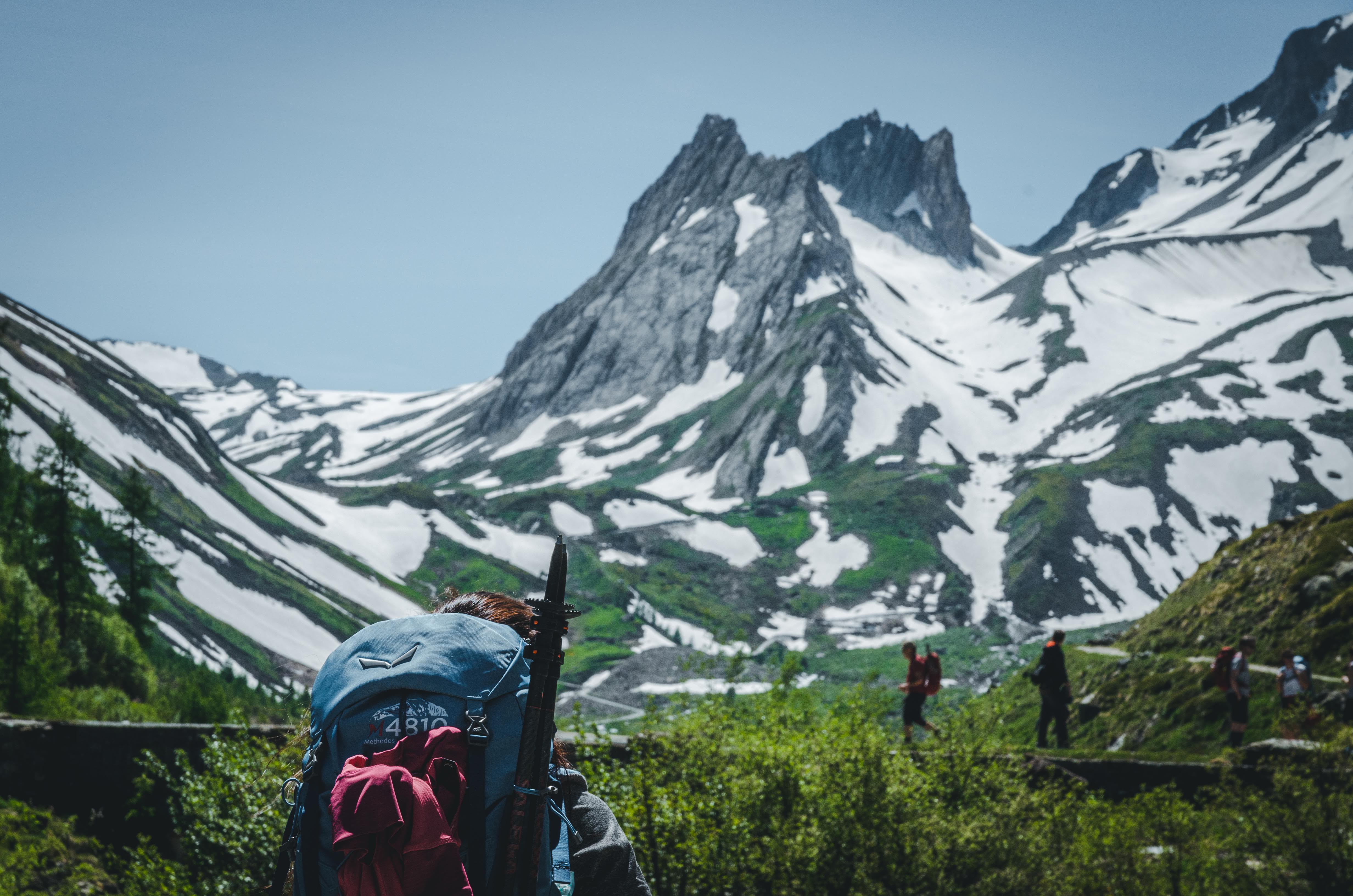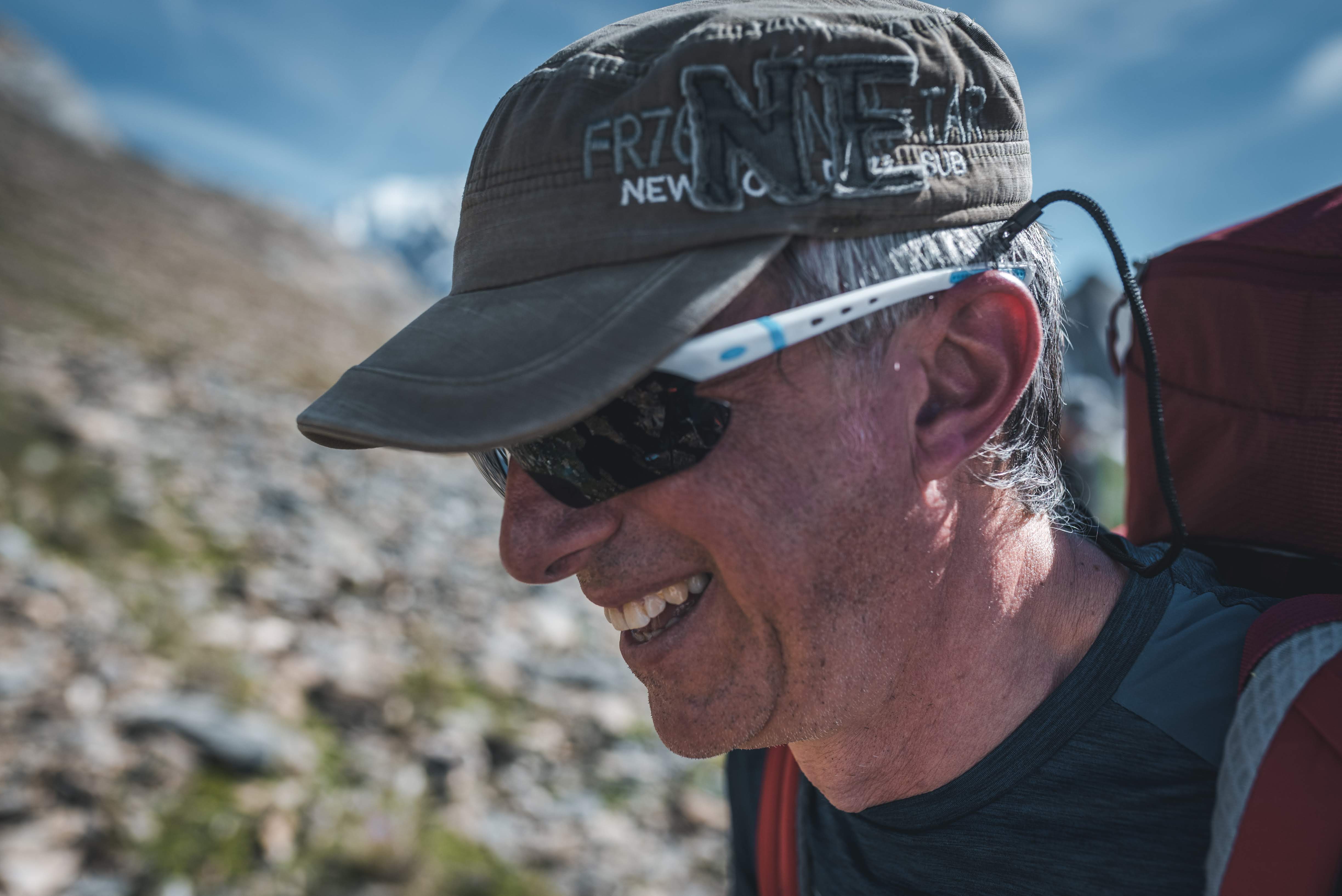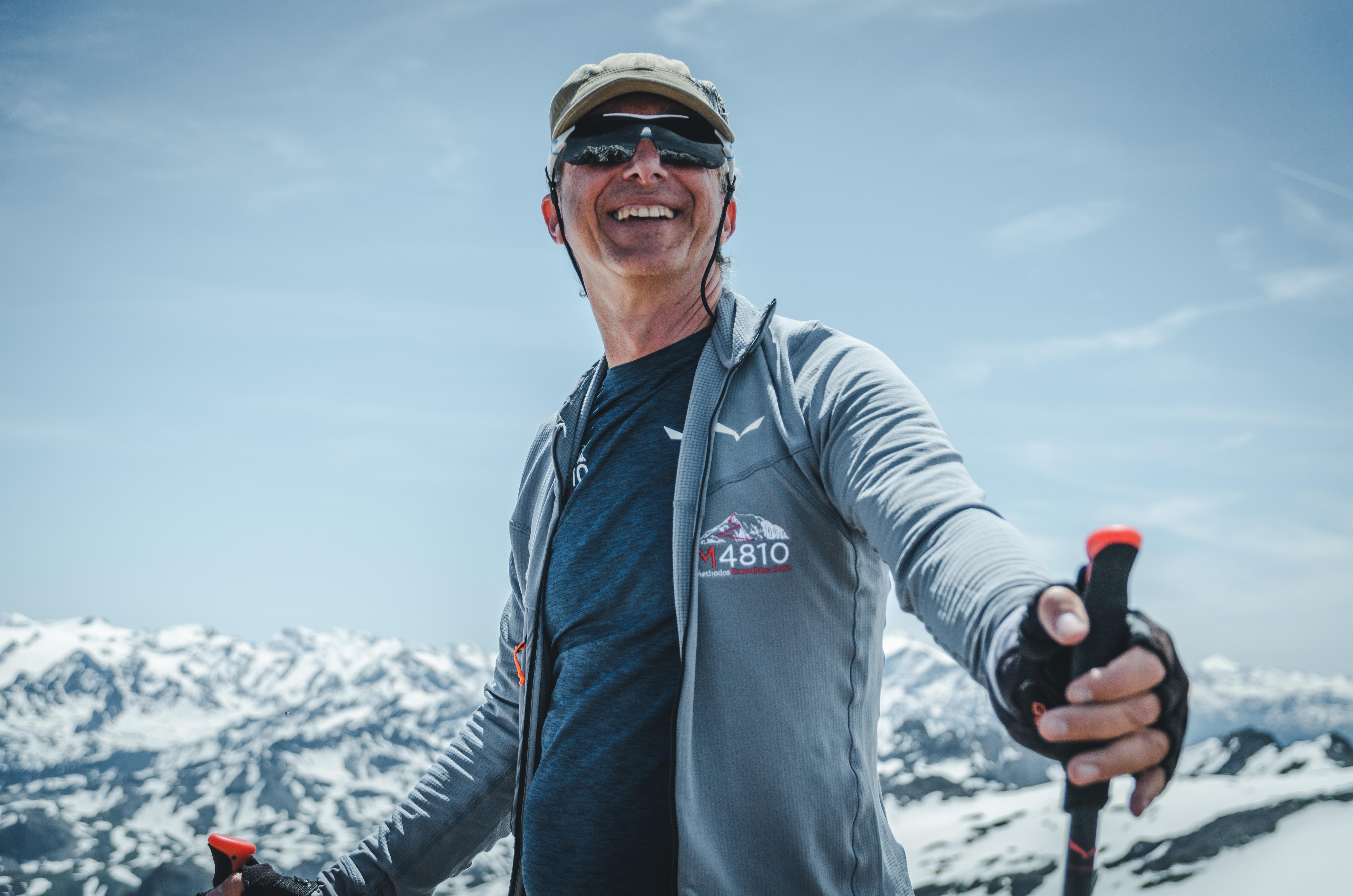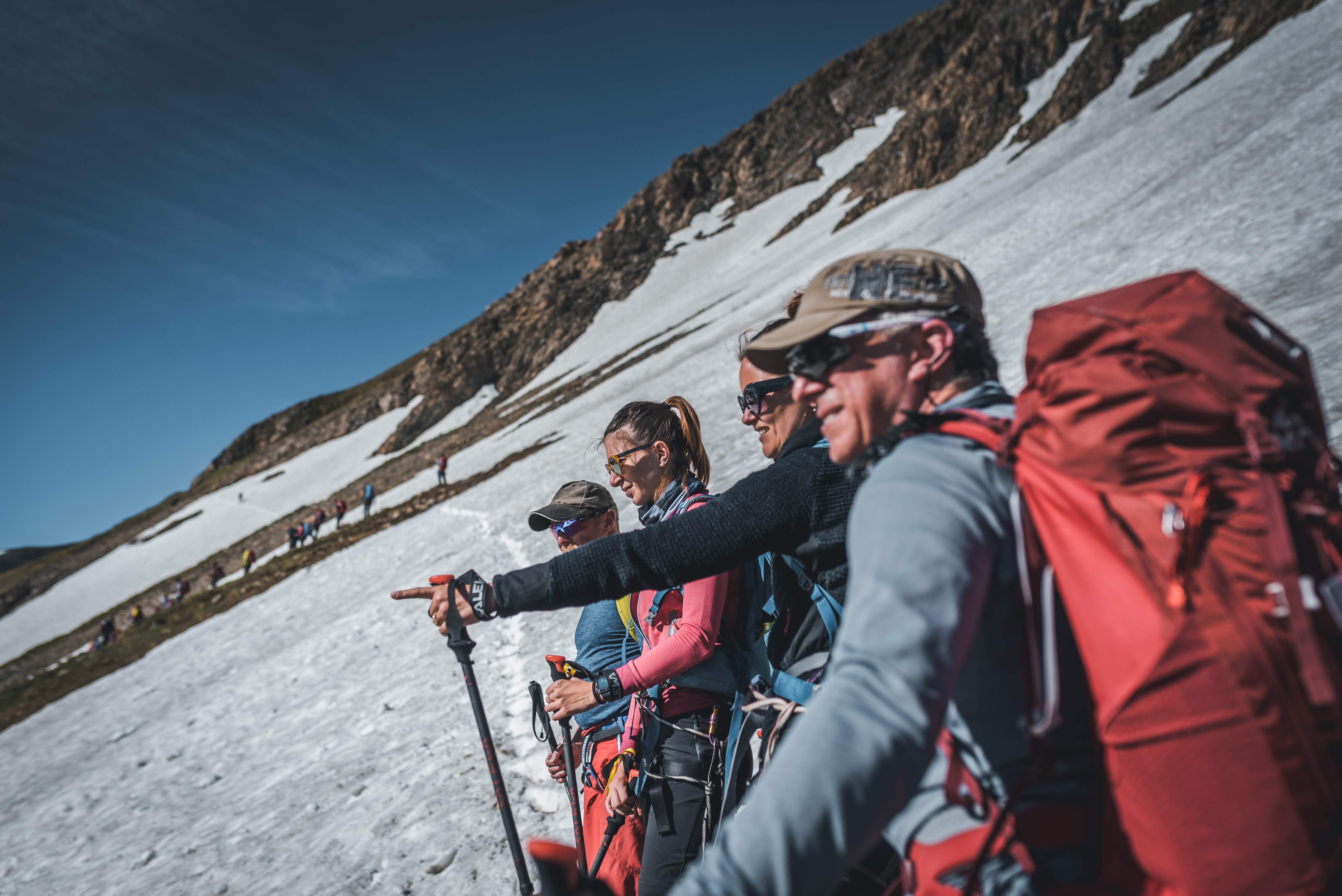
It’s a cold, golden morning when we exit the Elisabetta hut, found at 2200 metres among the peaks of the Aosta Valley. Today we’re taking on a challenging climb towards Punta Lechaud: we’ll need our crampons, ropes, and a bit of courage.
While we gear up with boots and backpacks, Martina reads out the groups that we’ll be climbing in.
I lock eyes with Max when my name gets called out together with his, and his face brightens up with his characteristic smile: it’s impossible to resist and not respond: I know I’m in good hands.

Max is one of those people that emanates genuine positive energy, the kind of person that manages to stay calm even when the game gets serious and you want to give up. Altogether an ideal team partner.
Especially because he’s a real team player. I’ve never seen him leave someone behind during our hikes. He has a natural way of never weighing down on the group, but always staying behind, taking on the role of “guardian” of those who – for one reason or another – get left behind. I don’t often see him reach the top, but from his lean physique and the way he chats with ease even during the most difficult hikes that it isn’t physical difficulties that slow him down. I’m curious, then, why does he do it?

Maybe it’s because of his past. He tells me that he used to do social work, designing adventures and activities for people with various difficulties. “Instead, today, I do activities that help adults change,” he says, laughing, as we walk. I smile: the definition is spot-on, seeing as what Methodos often does to help their clients through a change process is to create situations that are challenging, that are adventurous, and that push people out of their comfort zones.
And, as I quickly discover, he is a mountain man at heart.
He manages his way though the forests and knows how to choose the best path, how to dose his effort, and when to slow down because a colleague is in difficulty.
“I’m a mountain man, since I was a kid the sea always kind of bored me. Leave me on the beach and I won’t last long, throw me in the forest and I’m full of joy! When they told me about M4810 it was like Christmas morning.
I think it’s a one of a kind occasion to start seriously hiking again – which I haven’t been doing for a while – but it’s also a really visionary project. In the mountains, physical training isn’t enough – above all, it requires mental preparation. That means everything from the attitude towards the challenge, the group, to overcoming limits without forgetting about the safety of the individual and the team. It’s the same message that we try to send our clients every day, especially when we bring them out to “play” in contexts far out of their comfort zone. Applying it to ourselves is genius.”
He recounts some episodes while we climb, speaking with a level of ease that would make you think the climb was effortless, making me realise that he could easily be among the first to get to the top at any outing. And still, this is the first time that I don’t see him at the end, closing the road with a walkie-talkie in hand.
I test my theory, asking him what he thinks about making it to the top of the Mont Blanc. He gives me a sarcastic grin, “My dear, at a certain age you can have the luxury of not worrying about it. I don’t have that desire to win when I play, to show off. I don’t feel like I need to get to the top, I have nothing to prove, I don’t mind staying behind. I hike for the pleasure of hiking, because I like doing it and experiencing the mountains, because I love this project and the way that it challenges me personally and professionally, but I could never leave a colleague behind just to do it my way.
So, if you ask me about the Mont Blanc, I can only answer: I’ll get to where I’ll get to. Each step will be a test for the following step. The Vallée Blanche for the Rosa, the Rosa for the Blanc, and so on. Today is also an important test – the first time using crampons at high altitudes, and it will tell me a lot about my capacities. If my body allows me, I’ll try. We’ll see how far I’ll get.”
Then he stops for a moment to reflect on it, before adding, “Of course, I hope I don’t arrive just below the peak of the Mont Blanc and have to give up just steps away from the top!”
In the meantime, while we talk, the climb gets harder. Green fields turn to snow, the environment is completely different as the altitude starts to play tricks on our lungs. It’s difficult, and I can see that my climbing partners are just as tired as I am.
We cross “pieces” of other ropes – people that slowed done or chose to stop – and our guide, Arnaud, who is grouping them up for the way back down.

“You know, I was prepared for the team dynamics that would have come out of this project, but I didn’t expect them to be so strong,” Max tells me, “We’re modeling every choice, every decision, on ourselves and on our relationships, because there is something profoundly personal in what we’re doing. Every time that a person stops or forces themselves to push forward, they have an impact not only on themselves, but on the group.”
I don’t understand exactly what he’s referring to but I take it as an autobiographical cue, an attempt to explain his motivations in other words.
When we arrive under the spur of rock and ice that is Pointe Léchaud, we collapse on the snow, tired and hungry. I start eating, hoping it would restore my energy for the final stretch.
We quickly eat our sandwiches and we barely have time to rest when it’s time to put on our crampons: it’s time to climb to the peak.
While I fumble about with my boots, I can see that Max isn’t getting a move on and that he has no intention to. What’s happening?
“I think I’ll stop here,” he says bluntly. I’m surprised – we’re almost there! There are just a couple of hundred metres to the top, and I don’t understand why he would stop now. But I can see something beyond fatigue in his gaze.
I try to push him, to convince him that he can do it, but he just smiles, shaking his head.
“I told you, Ila: if I thought that I were able to do it and that it was the right thing, I would. Don’t worry, I’m fine. I’ll wait for you down here!”
I don’t insist, it wouldn’t make sense; I say goodbye as we take off for the top.
As I turn to do so, I notice three tiny coloured figures climbing along the valley of the mountain…
It’s Arnaud, Sabrina, and Carlo, the people that we had overtaken and that had decided to stop. They’re making their way, slowly but surely. At their own pace, in the end.
Looks like Max will have company!
Getting to the top is like Mother Nature’s prize for our hard work. We look around us with smiles that stretch from ear to ear, exchanging hugs and high-fives. My group is the last to arrive, and we run into the others on their way down, wearing the same satisfied grins.
When it’s our turn to go back down, after getting an eye and lung full of the mountains, I see someone still climbing. Strange – we should have been the last ones.
I take a better look and see them! Arnaud, Sabrina, Carlo, and Max.
When we cross each other and we compliment them on their hard work, I lock eyes with him, and he gives me a knowing smile.
I smile back: in the end he made it to the top without leaving anyone behind, nothing short of his signature style!






